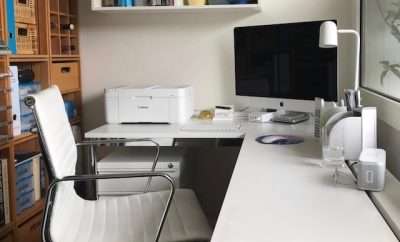 Pexels
Pexels
A Brief Guide to Setting Up an Eco-Friendly Office
A Brief Guide to Setting Up an Eco-Friendly Office
Not many guides go all that in-depth about going green. Sure, reduce your paper waste by going digital everywhere you can. More plants are always good. You should definitely encourage recycling and stay away from harsh chemicals in your maintenance. But what about the more intrinsic aspects of office life? Here’s what you can do. A brief guide to setting up an eco-friendly office.
Transition to remote or hybrid work
The most immediate and dramatic change you can make towards eco-friendliness in the office is to cut down on commute times. How many employees drive versus walking, biking, or taking public transport?
By reducing the required travel time, you reduce your business’s carbon footprint and your contributions to air pollution in your city. Employees who work remotely or on a hybrid model have better work-life balance. They are more satisfied, more motivated and more productive.
Moreover, with fewer people constantly in-office, you require less office space. This means smaller energy bills, further reducing your carbon footprint, lesser utility costs, and less maintenance hassle.

Photo by Burak The Weekender on Pexels
Develop energy-efficient practices
There are a few simple office habits to make the whole place more energy-efficient. Turning off computers at night enormously reduces energy waste. If you cannot have them entirely off, take advantage of the Sleep and Standby modes. The same applies to printers, copiers, etc.
Energy-efficient light bulbs are another easy yet effective way to make the entire office more sustainable. Most people are put off of eco-friendly light bulbs because of their higher upfront cost, but this is short-sighted.
Energy-efficient bulbs save multiple times their worth in energy costs over their lifetime. Besides, you don’t need to transition all at once. Replace traditional bulbs organically – when the next one pops, install an eco-friendly replacement.
Opt for eco-conscious office supplies
This includes typical stationery, but also things like packaging and labels for your products. Consumers nowadays are vehemently against excessive plastic. Look into alternatives such as recycled materials. Consider investing in eco-friendly commercial label printers, especially if you offer shipping services.
Set up a “reuse closet” too. Have employees contribute anything that can be reused and is still in decent condition. Examples include binders, paperclips, folders, cartridge pens, spare pencils, rubber bands, thumbtacks, etc.
Another common offender is coffee cups. Transition your office to either compostable or reusable ones. You could also encourage employees to bring in their own cups or mugs for in-office use.
Not only will you cut down on waste, but people can also tailor the vessel to their consumption volume, and have a little ray of sunshine during the workday with their favourite silly mug.

Photo by Vlada Karpovich on Pexels
Offer nature-friendly merch
If you promote your business via custom merchandise, make a point of making those promotional items as sustainable as possible. Invest in a product line that is eco-friendly and fair-trade.
Common corporate merch includes stationary, mugs, water boles, tote bags, and simple clothing items like T-shirts. Make yours non-toxic, low-maintenance, and reusable.
As much as possible, look for vendors, manufacturers, and suppliers who are proven to be environmentally friendly. Choose local partners to cut down on the carbon emissions and other negative effects of long-distance shipping. Support small and/ or family-owned businesses as much as you can.
Grow an awareness culture
Educate your employees on the underlying values and principles of environmental consciousness. Establish training programs to train them in implementing those principles in business practice.
One way to achieve this is to host workshops and talks about environmentalism. Bonus points if you can present it in the context of your specific industry and its impact. You could also collect and utilize employee suggestions for topics. Encourage your people to learn about issues that interest and concern them.
You might also establish a sustainability team. Select people from among the office employees themselves, rather than management and leadership. Peer engagement is much more successful than top-down policies.
Your sustainability team can manage priorities in making the office a greener space. They can help organize efforts towards peer education, upgrading appliances, improving sustainability programs, etc.
In conclusion
Setting up an eco-friendly office means more than minimizing paper waste and bringing plants into the space. Transition to remote or hybrid work. For mandatory in-office days, set up with reusable stationary and coffee cups. Invest in eco-friendly company merch, product packaging, labels, and office equipment such as light bulbs. Encourage peer education and a sustainability culture throughout. Really commit to environmental values and apply them to your day-to-day operations.














